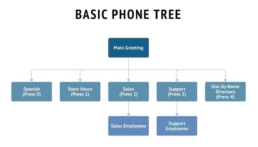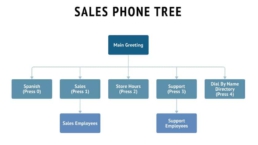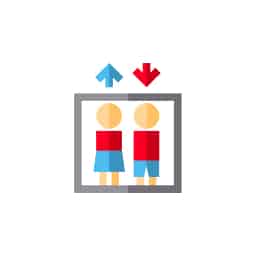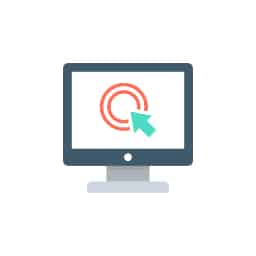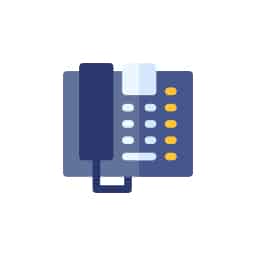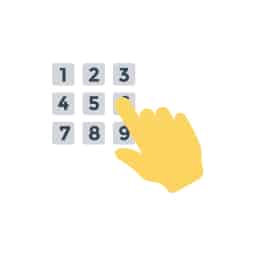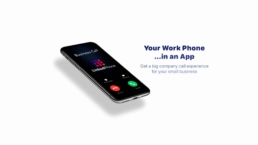How to Set Up a Phone Tree To Get Your Customers Talking
Table of Contents
- What is a Phone Tree?
- How a Phone Tree Works
- Using a Traditional vs Automated Menu System
- Benefits of Phone Trees for Customer Service
- Common Disadvantages
- How to Set Up a Phone Tree for Your Business
- Customizable Templates You Can Use
- Grow a Phone Tree That Gets Your Customers Talking
- Small Business Resources for Business & Personal Growth
How to Create a Phone Tree:
-
- Create a hierarchy of departments and extensions that callers can choose from.
- Record a professional voicemail greeting and script of prompts.
- Program your business phone system to provide options and route calls as desired.
- Set up options to bypass the automated prompts and go straight to a live representative.
- Regularly review and update your phone tree to make sure that it is still providing the best customer experience.
With tools like chat, SMS texting, voice notes, and more at our fingertips, fewer and fewer people even pick up the phone to make voice calls these days. While incredible advances in technology across all types of new devices have revolutionized communications, the humble phone call is still an incredibly important tool for business and customer service communications. In fact, many surveys reveal that the majority of customers still prefer a phone call over text or chat messages when they require assistance from a business.
Knowing how to set up a phone tree to get customers talking quickly to the right person at your company who can best meet their needs is an important step to ensuring your customers’ communication needs are being met in the most efficient way possible.
What is a Phone Tree?
A phone tree is a feature of a business phone system which streamlines the call process and frees up employees and customer service representatives to focus on providing optimal customer service. You may be familiar with two different meanings, as the term may refer to either a call routing system for a telephone service in which callers are routed according to their selections in automated menus, or alternatively a system of contacting a large number of people quickly to notify them of events or disasters using a phone chain.
While this article is focused on the former (call menus), let’s break down each of these terms to make sure we understand each one clearly.
Call Routing System
Most people have experienced an interaction with this type of menu when calling a business. The tree functions as an automated information system designed to field customer inquiries, allowing callers to interact with a virtual receptionist and call menu options to reach their desired department or personal extension in an efficient manner.
A phone tree works like a menu for call routing which allows customers to select options on their phone’s dial pad or to speak their choices in order to be transferred to the right person, department, informational recording, or perform simple automated tasks. Most modern customer service phone systems are powered by interactive voice response (IVR) system technology, which tells the caller what the menu options are and interprets their voice or dialpad responses.
Phone Chain
This variety of calling tree is used to notify people of events or disasters and is sometimes referred to as a call tree, call list, phone chain, telephone tree or text chain. The tree is set up like a flowchart, used to quickly notify customers or individuals of events or disasters, or to provide a group of people or organization with important time-sensitive information. A calling tree is a hierarchical structure that allows the initial caller to provide information to many people without making many phone calls themselves.
Phone chains begin with a single caller, or administrator, who contacts the first person on the list. That person then contacts the next person on the list, or in their assigned contact group, and so on until everyone on the list has been contacted.
Automated services now exist that will do the work of calling or texting down the tree for you. After entering your contacts into the software and grouping your contacts as desired, all you have to do is record your message and the service will ensure it is delivered to the right group of people. There are also now apps that mimic this process, allowing you to program the app with your contact lists so that they can reach a specific group of people. The app should allow you to create multiple different lists of contacts for specific events or purposes.
Whichever method is used, a calling tree is an easy and efficient way to contact a large group of people quickly to inform them of an event, an emergency, natural disaster, or any other critical information which needs to reach the most affected individuals first.

How a Phone Tree Works
A business phone tree works by playing a pre-recorded message which prompts the caller to select from a list of options. Depending on the caller’s selection, the call is routed to another list of options, an automated function, or to the appropriate department or individual. The menu should also allow the caller to speak with a live representative if they do not find the option they are looking for, or if they simply prefer to bypass the robot.
The system is highly customizable, allowing users to configure options to suit their business needs. Additionally, the system can be programmed to provide additional information, such as store hours or contact information, as part of the automated message.
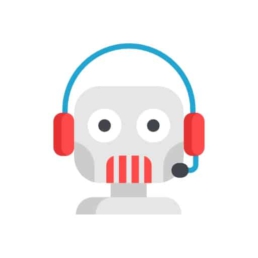
Using a Traditional vs Automated Phone Tree System
Traditional calling menu systems require an operator to manually answer calls and direct them to the right department. This can be time consuming and labor intensive. Automated systems are much more efficient and cost effective, as they allow customers to quickly find the information they need without having to rely on an operator. However, some individuals still prefer the personalization that comes with speaking with an operator, because automated systems do have their quirks and challenges.
For example, an automated system may struggle to understand the voice responses of people with an accent, or may be challenging for others with limited technical capacity or understanding of the situation they are calling about. For this reason, menus often provide the option to bypass the system and go straight to an operator.

Benefits of Phone Trees for Customer Service
Automated phone trees are a great tool for businesses looking to streamline their customer service process. A few top examples include:
-
- Efficient customer service: Provide customers with a fast and efficient way to reach the right department or extension without having to speak with an operator or middleman.
- Reduce wait times: Help lower customer wait times by automatically routing customers to the right department or person they need to speak to.
- Reduce overhead costs: Using phone trees for customer service also allow businesses to reduce time spent and overhead costs associated with manual routing of calls by an operator
- Prevent spam calls & robocalls: Using a business virtual receptionist along with automated calling menus can help stop robocalls to your business.
- Timely service: Customizable to meet the needs of your business; for example you can route calls to different departments or personnel based on the time of day or company branch location.
Finally, one often-overlooked additional benefit of phone trees for businesses is that they can make it easier for companies to report and analyze customer service data, in order to better understand customer needs and improve service.

Common Disadvantages
Although phone trees are an efficient way to answer customer inquiries, they can be frustrating for callers who don’t know what they need or can’t find the right department or extension. They can also be difficult to navigate or confusing for callers who don’t understand the prompts or instructions. Complicated or slow moving phone trees can be time consuming, and customers may lose patience with having to press multiple buttons to get to the information they are looking for. Additionally, automated phone trees can sound robotic and impersonal which can be off-putting to some customers.

How to Set Up a Phone Tree for Your Business
Setting up a phone tree for your business is a relatively simple process. Follow these steps to get up and running:
-
- Create a hierarchy of departments and extensions that callers can choose from. This should include any departments or services that customers may need to reach, such as customer service, sales, billing, technical support, etc.
- Record a professional voicemail greeting and script of prompts and instructions for callers to follow. This should include a main menu, as well as clear and concise instructions for navigating each element of the phone tree.
- Set up your phone system to accommodate your desired menu hierarchy. This may involve programming the system to route calls based on the caller's selections, as well as setting up automated voice recordings to provide further instructions. Options for doing this may vary based on your phone system and service provider.
- Consider setting up options for callers to bypass the automated system, such as a direct line to customer service or an option to speak to a live operator, as many customers prefer to go directly to a person rather than deal with a computer system.
Once the phone tree is set up, you will need to regularly review and update it to make sure that it is still providing the best customer experience. This may involve making changes to the script and menu hierarchy, and adding or removing departments, extensions or services. It is recommended to do periodic testing for quality and performance of your system by calling your own business, being sure to listen to all the automated messages and testing the individual responses.

Customizable Phone Tree Templates You Can Use
To make setting up your calling menus easier, using a phone tree template can help organize your thoughts and save time creating diagrams and flowcharts. Templates provide a simple and efficient way to set up your menus to ensure that your customers have a smooth and hassle-free experience.
There are a number of customizable phone tree templates available online. The website Fit Small Business has developed a number of useful calling menu flowcharts you can use for your own calling system, such as a Sales template, Customer Support, or for Multiple Locations. Take a look at their full list of phone tree templates for more ideas.

Grow a Stellar Phone Tree That Gets Your Customers Talking
Phone trees are a cost-effective way to ensure that incoming calls are routed efficiently and accurately, getting your customers talking to the right people quickly. This is a great way to ensure you don’t lose customers to faulty communication, keep them connected with your business, and satisfied with their interactions. With a little bit of planning and effort, you can create a phone tree that will help your customers quickly get the support or information they need.
To get started with your own virtual business phone system, featuring a plethora of professional options like a virtual receptionist and fully customizable automated call menus, sign up for a 7-day free trial of LinkedPhone today!
LinkedPhone serves the small business community with local & toll-free business numbers that work with your cell phone, desk phone, & laptop. Add a 2nd phone number to your cell phone with our mobile app. Talk & text with clients on the go. Add team members too. Finally break free from the desk phone. At LinkedPhone, freedom rings! 🔔📱💻☎️
Business Growth Toolkit
Get the latest thought leadership insights on growing your business plus occasional LinkedPhone updates. We respect your inbox!
Small Business Resources
A special high five to Faith Dickens for her outstanding research and contributions to this article. We love working with and supporting like-minded entrepreneurs. Thank you Faith! ❤️
Get In Touch
We would love to hear from you.
Please contact us at any time with questions or feedback.


